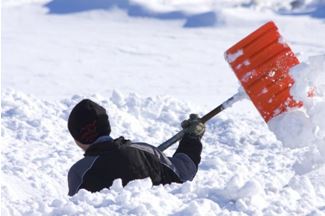It’s one of the most contentious debates in investing. Perhaps a more important question: which approach will be superior over the long term, active or passive investing? Active investing is when you proactively move assets (buying and selling) with the goal of beating relative market performance as measured by an index. Relying on trend analysis and your past experience, you seek to buy individual stocks, sectors and/or fund managers when they appear low with the plan to sell them when they’re higher. If you guess correctly, you have the potential for significant returns. But if you’re wrong, the results can be costly. Passive investing is when you buy a diverse mix of assets and reallocate your funds only when rebalancing …
Why Passive Investments are Popular
“We’ve long felt that the only value of stock forecasters is to make fortune tellers look good.” This classic quote from Warren Buffett encapsulates the guiding principle of passive investors, who prosper not by trying to do better than the stock market, but by mimicking it at a low cost. These investors are often proponents of index funds and ETFs (exchange-traded funds), which are “portfolios that match or track the components of a market index, such as the Standard & Poor’s 500 Index (S&P 500).”1 Active investors are those who try to beat the performance of the overall stock market by selecting stocks (or other investments, such as bonds, real estate or precious metals) whose value will grow faster than …
Safer patient handling requires a change in culture
Patient handling is a risky task that often goes overlooked, but it’s time to incorporate a safer approach within your organization.
Keep your restaurant running smoothly after a crime takes place
You can never predict when a criminal will burst through your doors and ask for all of your money instead of a table for one.
How to shop for small medical business property and casualty insurance
With so many medical practitioners focused on picking the right malpractice insurance for their business, property and casualty insurance can sometimes slip out of their view.
4 winter weather hazards small businesses need to watch for
Winter is here and that means the nasty weather is too. The Northeast has seen its fair share of historic storms over the years, and 2017 should be no different.
The New Year and How It May Affect Your Benefits
The beginning of 2017 signals a new plan year for some insurance plans. For individuals with these plans, this means that any changes made to health plans and new deductibles will take effect Jan. 1, 2017. It will be important to keep these changes in mind when you or your family seek out health care. You should also be on the lookout for things like changing prescription drug coverage limits and changing copay amounts. In addition to reviewing your policy, be sure to follow these quick tips to be a wise health care consumer next year. Consider using generic prescription drugs instead of brand-name drugs, when possible. Shop around for the lowest rates before visiting a doctor, when possible. Visit …
4 facts about dairy cows
The national discussion around the treatment of farm animals is more active than ever. But when it comes to dairy cows, do you know the whole story?
Self-insurance helps small businesses clear hurdle [Video]
It seems there's a never ending to-do list for small business owners, and insurance is squarely up there with the rest of the responsibilities.
Snow Removal Injury Prevention
Common snow removal injuries and medical emergencies include overexertion of muscles, falling, lower-back injuries, broken bones, and heart-related problems. The arms and hands are the most common area for bone fractures, while adults over 55 were more than four times likely to have heart-related symptoms while shoveling, compared to younger people. Preventing falls includes those that occur while workers are removing snow from rooftops or other elevated surfaces. To keep workers safe, employers should develop plans for snow removal methods that do not involve workers being on rooftops. Safe working tips include: 1. Dressing appropriately – Wearing layers of clothing allows for both ventilation and insulation. Keep the head warm, as this is where a lot of body heat escapes. …









